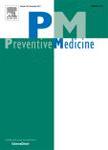版权所有:内蒙古大学图书馆 技术提供:维普资讯• 智图
内蒙古自治区呼和浩特市赛罕区大学西街235号 邮编: 010021

作者机构:York Univ Sch Kinesiol & Hlth Sci Toronto ON Canada Western Univ Dept Epidemiol & Biostat Toronto ON Canada Univ Toronto Dalla Lana Sch Publ Hlth Toronto ON Canada Ctr Addict & Mental Hlth CAMH Toronto ON Canada Egale Canada Toronto ON Canada Univ Toronto Factor Inwentash Fac Social Work Toronto ON Canada
出 版 物:《PREVENTIVE MEDICINE》 (Prev. Med.)
年 卷 期:2025年第192卷
页 面:108224-108224页
核心收录:
学科分类:12[管理学] 1204[管理学-公共管理] 120402[管理学-社会医学与卫生事业管理(可授管理学、医学学位)] 1004[医学-公共卫生与预防医学(可授医学、理学学位)] 1002[医学-临床医学] 10[医学]
基 金:Canadian Institutes of Health Research Canada Research Chairs [CRC-2021-00269] Social Sciences and Humanities Research Council [435-2020-1086]
主 题:activity limitation transgender non-binary Canada Census
摘 要:Introduction: Activity limitations among transgender and non-binary individuals remain largely unexplored using population-based samples. This study examines the risk of activity limitations across different gender identities in Canada. Method: Using data from the 2021 Canadian long-form Census, logistic regressions estimated the adjusted odds of reporting activity limitations (seeing, hearing, mobility/dexterity, mental, cognitive, and other) across gender identities. Results: Non-binary individuals assigned female at birth (AFAB) had the highest predicted probability of reporting any activity limitations (76.13 %), followed by non-binary individuals assigned male at birth (AMAB) at 61.56 %, transgender men (44.71 %), and transgender women (34.41 %). Cisgender men (19.31 %) and cisgender women (21.98 %) had the lowest probabilities. Mental limitations showed the largest disparity, with 39.4 % of non-binary AFAB individuals affected, compared to 4.9 % of cisgender men. These findings highlight significant disparities in activity limitations across gender identities. Conclusion: Non-binary and transgender individuals are most at risk for activity limitations. These findings underscore the need for targeted policies to address challenges faced by gender-diverse populations. Future research should investigate the mechanisms behind these disparities. Healthcare policies must prioritize culturally competent, transgender-inclusive care to reduce disparities in activity limitations.